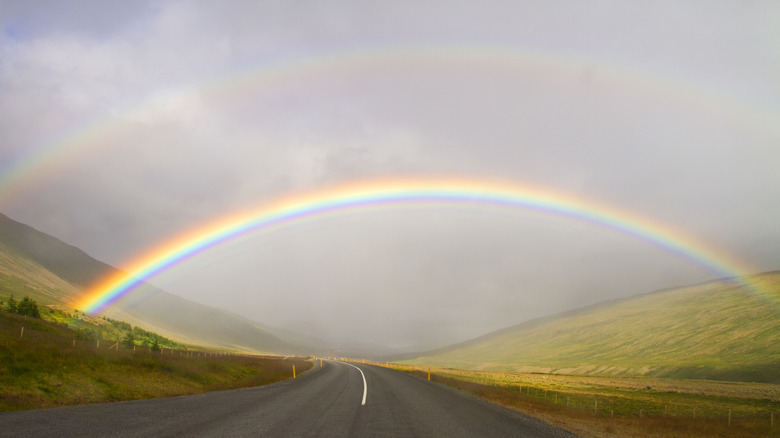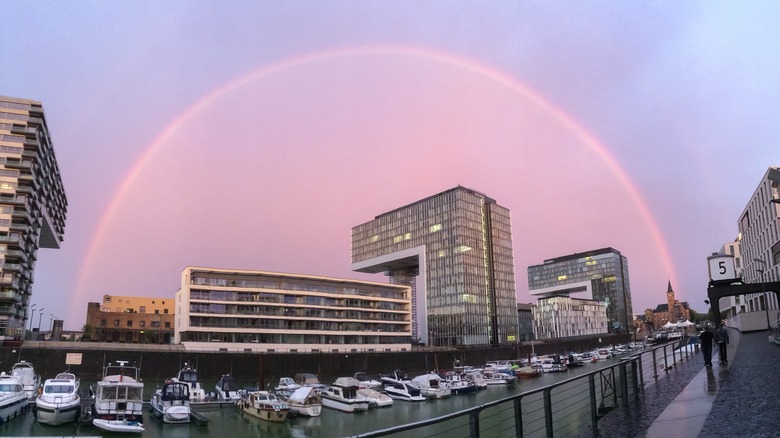The Rare Red Rainbow Phenomenon You'll Have To See To Believe
As an awe-inspiring phenomenon in the sky, the rainbow is a common occurrence. You might remember making rainbows with prisms as a science experiment on light refraction when you were in school. However, not all rainbows are created equal. In fact, there are several variations, such as reflected rainbows (which appear over water) and moonbows. The red rainbow (or monochrome), though, is a far less common, and even people who regularly study the sky only see one or two in their lifetimes.
While the colors in the rainbow are typically a spectrum of colors — red, orange, yellow, green, blue, indigo, and violet — a red rainbow only contains shades of red. A letter published in an 1881 issue of Nature provides a great description of what this phenomenon looks like. Recalling a brilliant red rainbow that he saw over Lake Lucerne in Switzerland four years earlier, physicist and electrical engineer Silvanus P. Thompson described it as developing at sunset, which is common for this kind of display, while the entire sky was colored in red hues. He could only see red and orange colors where the whole spectrum usually appears. So, if you're fortunate enough to catch a glimpse of a monochrome rainbow, that's exactly what you can expect to see.
How a red rainbow forms in the sky
A monochrome rainbow forms in a similar way as a standard rainbow, so it can be helpful to understand how rainbows appear in general. For starters, all rainbows are optical illusions, so they don't physically exist in the sky. Instead, their appearance occurs when sunlight passes through drops of water at a 42-degree angle from your viewpoint. Since they can happen with any drops of water, rainbows can show up when it's raining and around sea spray, waterfalls, and fog.
Second, the properties of the visible light spectrum center around the different wavelengths of light that create the range of red to violet colors that are visible to the human eye. Sunlight is a mixture of all the wavelengths mixed together. When they pass through water droplets, though, each wavelength reflects at a different angle, creating the separated spectrum of color that's visible in the form of an arch or band.
A red rainbow, however, only has reddish hues because it only appears during sunrise or sunset. During these periods, the sun is closest to the horizon, so light from the sun has to travel a longer distance than peak daytime hours before it passes through the water droplets, reflects, and then is seen by the human eye. The shorter wavelengths of light — yellow to violet — scatter throughout the atmosphere along that journey. Only the longest wavelengths of light make it full distance to be visible to humans, resulting in the red (and sometimes orange) colors seen in monochrome rainbows.

